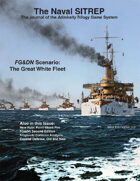Hello! Welcome back to the PNP News! This post is part of a series of interview that I'll be conducting with game designers who are participating in board game design contests on
Board Game Geek. Today, I'll be interviewing
Scott Allen Czysz who designed the game
Iron & Brass for the
2015-16 Wargame Print and Play Contest.
Tell us a little bit about yourself and your gaming history?
Way back in the 20th century when I was in high school and college, my first introduction to serious board games were my older brother's game of Outdoor Survival, and my cousin's game of Feudal. I had a couple wargames too: PanzerBlitz, D-Day, Upfront. Then, computer games came along (Doom, Warcraft, Call of Duty). Fast forward a couple decades (to about a year and a half ago), and my son starting helping a friend re-furbish an old downtown storefront because he was going to open a game store. Soon, games starting creeping into our house: One Night - Ultimate Werewolf which led to Carcassonne, which led to Stone Age, to Shipwrights of the North Sea (still my favorite), to 7 Wonders, and on and on.
What is your favorite PNP game?
Anything by Todd Sanders. Is that a valid answer? I've only printed one of his games - the 1 page "A Wanderer in the Forest of Wyr", but I've played a few more that I purchased. "The Seeker in the Forest of Wyr" and "Mr. Cabbagehead's Garden Game" are also excellent.
How did you first discover PNP design contests?
First, I discovered Board Game Geek. Then - being an engineer and creator - I discovered the Board Game Design section of BGG. I saw a thread for a publisher's design contest, dusted off a simple card game idea I had been toying with for years, created real cards (in Powerpoint - gasp!), submitted the game, and it actually was a finalist. The game is called Talons & Teeth (the beginning of my "this & that" game titles).
Could you describe your game from a thematic point of view?
From the BGG game entry: "Welcome to the colony of Dugbirch - not a sprawling city of splendor and spires and airships, but an almost forgotten place too far away from civilization and with not enough gold to attract the city dwellers. But, just enough gold to battle over.
Two rival towns are mining gold and hiring the able bodied to build their towns into cities and their militias into capable armies.
Iron & Brass (like its inspiration, the Warcraft PC games) challenges players to select the right strategy, then execute that strategy to defeat your opponent. Hoard resources, build up defenses, build up an army, or some of each - all while your opponent is doing the same."
So, this isn't a grand civilization sized game, it's more of a small colony civil war size. It's also slightly steampunk with steam powered vehicles and "Iron Man"-like armored infantry called "Iron Infantry".
 Could you describe your game from a game mechanics point of view?
Could you describe your game from a game mechanics point of view?
Iron & Brass is a simple, 2 player "4X-1" wargame. I saw 4x-1 since there really isn't any exploring, but there is definitely expand, exploit, and exterminate. Each player starts with a small base and gets 4 actions per turn to collect resources, build their city and army, move, and attack. Each player has about 40 units to choose from, but in a typical game, because resources are limited, will probably only build 15 or so. Combat resolution uses unit strengths plus each player rolling 2D3 (actually 1,1,2,2,3,3 D6). These dice introduce just the right amount of randomness, I think.
What were your design goals with the game?
I wanted to make a game that felt like the Warcraft PC game: decide on a strategy (offense, defense, hoard resources, etc.), then execute that strategy while your opponent is doing the same thing. The tech tree is similar to Warcraft also, so the players will need to build certain structures to get armor, or motorized vehicles, for example.
How long have you been working on your game?
I think I started toying with the idea back in July 2015, and had a good workable game by December of 2015. Special shout out to Chris Hansen for playtesting the game and providing valuable feedback. Thanks.
Finish the sentence: “If you like , then you’ll probably like my game” and perhaps let us know, what the similarities and differences are.
If you like the Warcraft PC games, then you'll probably like my game. Like I said, that was my inspiration, and I think the game flow is similar: collect resources to build up a city and army (from many choices of units), defend your city, decide when and how to attack your opponent.
Note from Chris: As Scott mentioned, I was an early playtester on this game.
Thanks for reading! For more interviews with game designers, please subscribe to the blog!
If you have entered a game in a PNP Design Contest on BGG, you can fill out this interview form to get coverage on your game.
Contest Interview Form
Please consider supporting the blog.
Support the PNP News Blog on Patreon
Support the PNP News Blog on Paypal
For more PNP News, please see the blog's companion site on BGG.
Print and Play News on BGG
If you have questions about the blog or sponsored content, please see the
PNP News FAQ.








